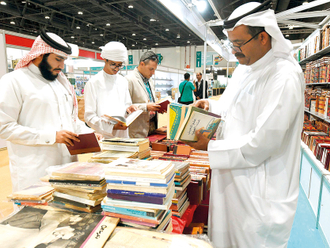Mohammad Bin Sulayem has won more international rallies and official rally championships than any other driver in history. But how do you become a rally driver? Mohammad, who is also the driving force behind the spectacular UAE Desert Challenge, gives Notes this advice
Advice I
I first came across rallying by accident in 1982. I was driving home on the outskirts of Dubai when I saw a crowd of people and a lot of cars just off the road ahead.
I stopped and asked what was going on. Somebody told me: “It’s a rally”. I asked: “What’s a rally?” and I was told: “It’s a race”.
I spoke to a few more people and based on what they told me decided that I would like to try my hand at rallying. A short while later, I entered my first rally, and I’ve been hooked on the sport ever since.
If you’re thinking of becoming a rally driver, the best people to ask about how to go about it are rally drivers. They’ve been through the process and know the ropes, as well as the pitfalls.
Rally drivers are normally very friendly and like to talk about rallying. In fact, it’s hard to stop some of us from talking about rallying, so don’t hesitate to ask for advice.
A good starting point is the Automobile and Touring Club of the UAE (ATCUAE), the national motor sport authority, which has offices in Abu Dhabi, Dubai and Sharjah.
The ATCUAE can let you have the dates and locations for the international and national rallies taking place in the UAE throughout the year, and can help you get in touch with drivers, and offer other advice on how to get a competitor’s licence, where to buy a rally car, or where to go to get your own car modified to make it safe and eligible to compete in rallies.
Also, follow the local and Middle East rally scene in your local newspapers and get to know the events and competitors. The next time a rally takes place, visit the rally office two or three days before the event, or turn up at scrutineering.
Advice II
This is where all the cars are officially checked for compliance with the rules on the day before the start.
You’ll have a chance to meet drivers, co-drivers and officials who will be able to answer most of your questions, and put you on the right track.
Remember right from the start that rallying is an expensive sport. You will have to quickly decide whether you’re going to become a rally driver for fun, or whether you want to take it seriously.
If you want to take the sport seriously, you’ll either need to make an investment, join forces with a group of friends who share your interest and want to form a team, or attract sponsorship.
It won’t be easy to find sponsorship. As a novice, you’ll have no track record to sell to sponsors. But don’t be put off. Sponsors may be attracted if you have something to offer, and if you’re prepared to give them value for money.
The biggest mistake a lot of drivers make when they get sponsorship is to forget about the companies who are backing them and why they are handing over money. Then they complain when they lose the sponsorship.
Before you think of sponsorship, however, ask a lot of questions to help you discover what rallying is all about, and if it is the sport for you.
You can’t just put a number plate on the side of your road car and turn up at an event, raring to go. You need a competitor’s licence, you need the right protective rally clothing and a crash helmet, you need a car that has been fitted with a roll cage to offer maximum protection and has been modified in a number of other areas to make it suitable and safe for rally driving.
You’ll also need a co-driver you can trust, someone who has experience, or has asked a lot of questions and taken steps to be properly prepared to guide you through a rally.
A driver and co-driver work as a team. So it is vital that they know, understand and trust each other. Taking time to choose the right co-driver is as important as choosing the right car.
If possible, befriend an established rally driver and persuade him or her (there are some experienced female rally drivers in this part of the world) to let you go out with them when they’re going out to practise for their next event.
Advice III
Watch how they handle a rally car. Observe their driving technique. And don’t be afraid to ask questions.
When you’re ready to make the commitment to acquire a rally car and a competitor’s licence, spend as much time as you can practising with one or more established rally drivers who will know the areas where it is safe to practise.
Make sure you’re properly prepared before entering your first event. Most importantly, make sure you have a thorough understanding of what rallying is all about, about the rules and regulations, and also the spirit of rallying.












